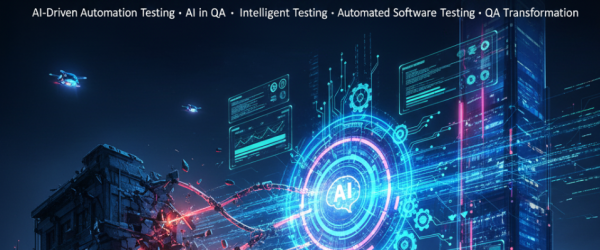Introduction
In a world where downtime costs an average of $5,600 per minute (Gartner), 24/7 system reliability isn’t a luxury—it’s a business necessity. Yet many organizations still rely on reactive monitoring, where issues are fixed only after they occur.
Enter proactive monitoring—the strategic, data-driven approach that predicts and prevents problems before they affect users or operations. It’s the foundation of digital resilience, ensuring systems remain healthy, secure, and high-performing around the clock.
What is Proactive Monitoring?
Proactive monitoring goes beyond traditional alert systems. Instead of waiting for failures, it continuously analyzes system patterns, predicts anomalies, and automates preventive actions.
| Traditional Monitoring | Proactive Monitoring |
| Detects incidents after they occur | Anticipates incidents before they impact |
| Manual root-cause analysis | AI-driven anomaly detection |
| Reactive response | Preventive remediation |
| Limited observability | Unified visibility across infrastructure |
Why Proactive Monitoring Matters — Key Stats
| Insight | Why It Matters |
| 60% of organizations report at least one major outage per year (Uptime Institute, 2024) | Shows the cost of reactive strategies |
| Companies with AI-driven monitoring see 45% faster mean time to resolution (Splunk State of Observability, 2024) | Demonstrates measurable operational gains |
| 80% of IT downtime is preventable with predictive analytics and observability (IBM Research, 2023) | Highlights the ROI of proactive models |
| Every hour of downtime costs $300K+ on average for large enterprises (Forbes Tech Council, 2024) | Quantifies the financial impact of reliability gaps |
Core Components of Proactive Monitoring
- Unified Observability
Connect data from infrastructure, apps, logs, and networks for full visibility.
- Tools: APM, infrastructure metrics, synthetic monitoring
- Outcome: Early signal detection and faster root cause isolation
- Tools: APM, infrastructure metrics, synthetic monitoring
- Predictive Analytics
Use AI/ML models to detect anomalies before thresholds break.
- Example: Detecting CPU spike patterns 3 hours before a crash
- Outcome: Incident prevention through data foresight
- Example: Detecting CPU spike patterns 3 hours before a crash
- Automated Remediation
Integrate self-healing workflows that act on anomalies automatically.
- Example: Auto-restart of failed services or load balancer reconfiguration
- Outcome: Reduced MTTR (Mean Time to Resolution)
- Example: Auto-restart of failed services or load balancer reconfiguration
- Performance Baselines & Benchmarking
Establish normal behavior patterns to identify deviations instantly.
- Outcome: Reduced false positives and accurate alerting
- Outcome: Reduced false positives and accurate alerting
- Governance & Reporting
Implement audit trails, SLA tracking, and incident reporting.
- Outcome: Transparency, accountability, and compliance readiness
Benefits of Proactive Monitoring
Minimized Downtime: Predict and prevent failures before they escalate.
Enhanced Customer Experience: Reliable uptime improves satisfaction and retention.
Operational Efficiency: Automated resolution reduces manual effort and fatigue.
Predictable IT Costs: Avoid unplanned outages and maintenance surprises.
Continuous Improvement: Feedback loops drive better system design and resilience.
The Proactive Monitoring Framework
| Layer | Function | Example Tools / Techniques |
| Data Collection | Metrics, logs, traces, events | Prometheus, ELK Stack |
| Correlation & Analysis | Identify patterns & anomalies | AI/ML analytics, time-series modeling |
| Automation & Response | Trigger self-healing workflows | Runbooks, ITSM integrations |
| Visualization | Dashboards, alerts, KPIs | Grafana, Power BI |
| Governance & Reporting | SLA tracking, audit logs | Custom reports, compliance dashboards |
Challenges & Best Practices
Common Challenges:
- Siloed data and tools
- Alert fatigue from false positives
- Lack of predictive models
- Inconsistent incident ownership
Best Practices:
Implement AI-driven anomaly detection to reduce noise
Establish clear incident escalation protocols
Conduct regular health checks and audits
Invest in cross-team observability tools
Integrate monitoring with ITSM for automated ticketing
Conclusion
Proactive monitoring isn’t just about spotting problems early—it’s about creating a culture of reliability and foresight.
By combining observability, automation, and predictive intelligence, organizations can move from firefighting to future-proofing.
The result? Happier customers, empowered teams, and systems that run as reliably as your business demands—24/7.







